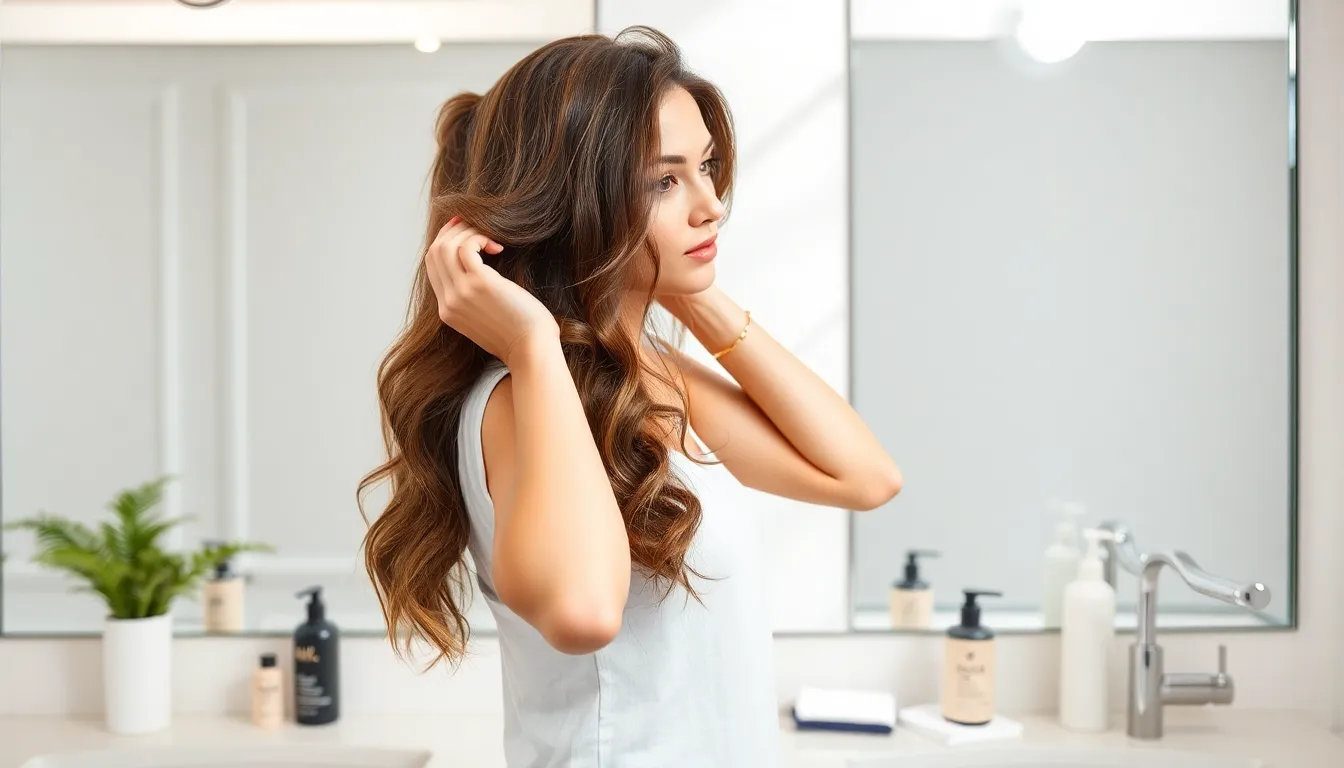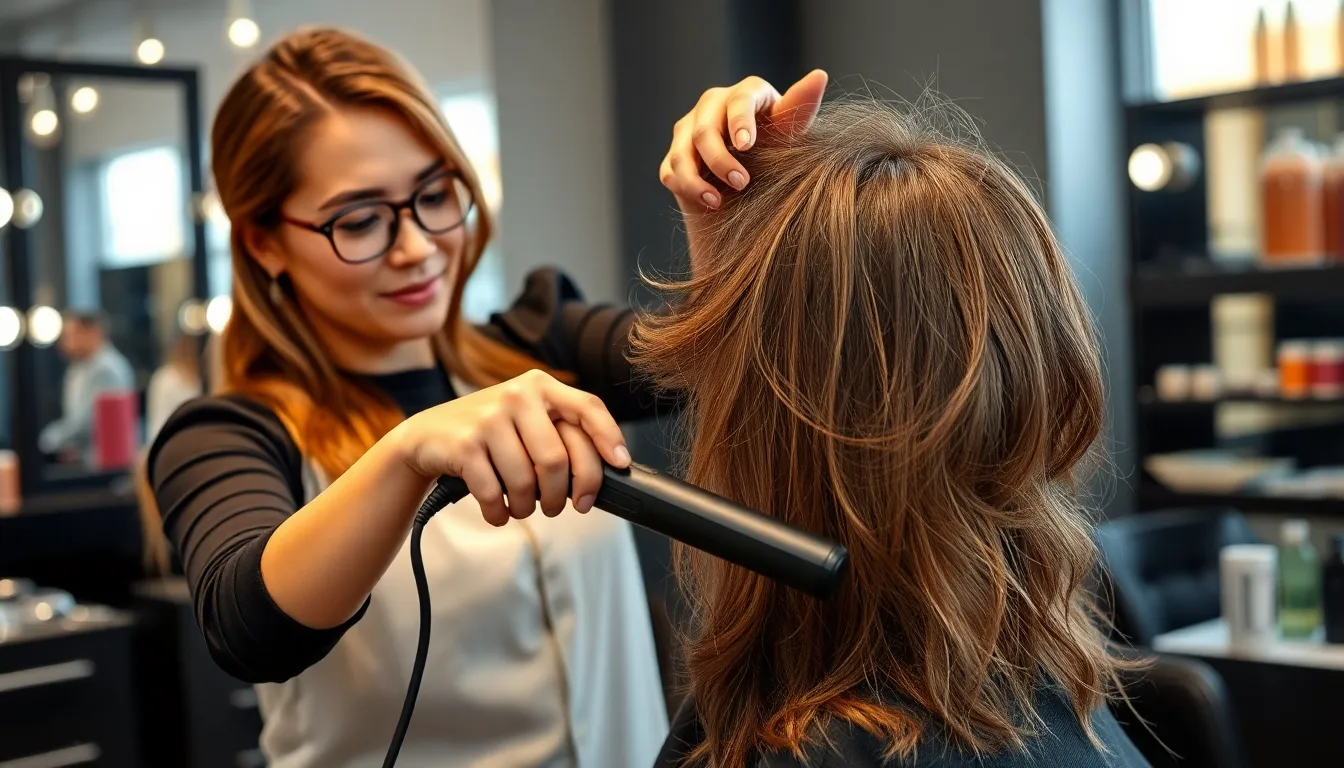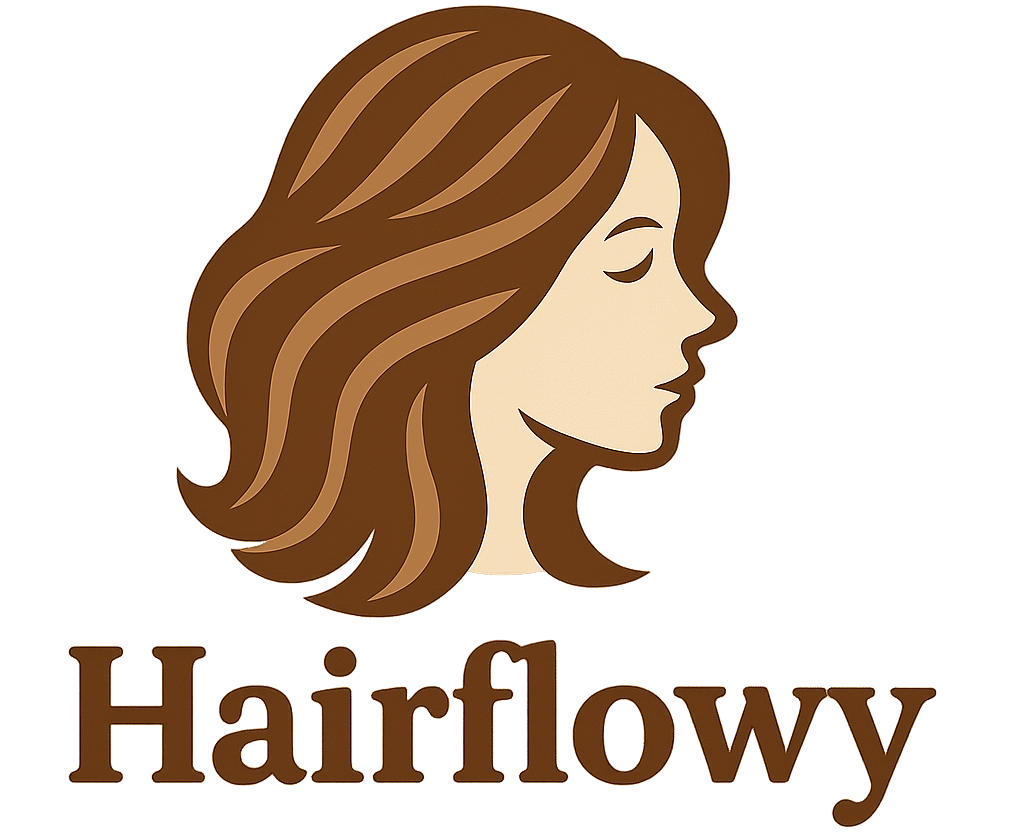Frizzy hair doesn’t have to be your biggest styling challenge. We’ve all been there – staring at the mirror after a humid day wondering how our perfectly styled hair transformed into an unruly mess. The truth is frizzy hair can actually be your secret weapon for creating stunning, voluminous looks that others spend hours trying to achieve.
We’re here to flip the script on frizz and show you how to embrace your hair’s natural texture. Instead of fighting against it we’ll teach you how to work with your hair’s unique personality to create gorgeous styles that last all day.
The key lies in understanding your hair type and choosing the right techniques that enhance rather than suppress your natural volume. From elegant updos to casual waves we’ll explore versatile hairstyles that’ll make you fall in love with your frizzy hair all over again.
Understanding Frizzy Hair and Its Unique Characteristics
We need to understand the science behind frizzy hair before we can work with it effectively. Learning about your hair’s structure and behavior helps you choose the right styling approaches.
What Causes Hair to Become Frizzy
Damaged hair cuticles create the foundation for frizz by allowing moisture to enter and exit the hair shaft irregularly. When your hair’s outer protective layer becomes raised or broken, water molecules penetrate the cortex and cause the strand to swell unevenly.
Genetics play a major role in determining your hair’s natural frizz tendency through the shape of your follicles. Oval or asymmetrical follicles produce hair strands with irregular surfaces that catch light differently and appear more textured.
Chemical treatments like bleaching, perming, or frequent coloring strip away natural oils and proteins that keep cuticles smooth. Heat styling tools above 300°F can also damage the cuticle layer when used regularly without proper protection.
Environmental factors such as sun exposure, chlorine, and harsh shampoos containing sulfates contribute to cuticle damage over time. Your hair becomes more porous and susceptible to frizz as these external stressors accumulate.
Different Types of Frizzy Hair Textures
Surface frizz appears as fine, flyaway hairs that sit on top of otherwise smooth strands and responds well to lightweight smoothing serums. This type typically occurs in straight to wavy hair patterns and becomes more noticeable in humid conditions.
Halo frizz creates a crown of shorter, broken hairs around your hairline and part areas that stand up independently from longer strands. Gentle brushing techniques and targeted styling products help control this common issue.
All over frizz affects your entire head when every strand has a rough, uneven texture that lacks definition and shine. Deep conditioning treatments and curl improving products work best for managing this comprehensive frizz pattern.
Combination frizz shows different textures throughout your head, with some sections appearing smooth while others remain coarse and unruly. Sectioning your hair and using different products for each area creates the most effective styling approach.
How Humidity Affects Frizzy Hair
Moisture in the air seeks to balance with the water content in your hair strands through a process called hygroscopic absorption. When humidity levels exceed 60%, porous hair absorbs excess moisture and swells beyond its normal diameter.
Your hair’s hydrogen bonds break and reform in response to changing moisture levels, causing the strand to contract and expand unpredictably. This constant movement creates the characteristic frizzy appearance that many people struggle to control.
Low porosity hair resists humidity better because its tightly sealed cuticles prevent moisture penetration, while high porosity hair acts like a sponge in humid conditions. Understanding your hair’s porosity level helps you select appropriate anti humidity products.
Weather changes throughout the day can transform sleek morning styles into afternoon frizz as humidity fluctuates with temperature and atmospheric pressure. Using humidity blocking ingredients like silicones and polymers creates a protective barrier against environmental moisture.
Preparing Your Frizzy Hair for Styling Success

Before we jump into exact hairstyles, we need to set our frizzy hair up for success with the right preparation techniques.
Essential Hair Care Products for Frizz Control
Shampoos and conditioners formulated specifically for frizzy hair become our first line of defense against unruly strands. These products work by smoothing and hydrating the hair shaft, creating a foundation for better styling results.
No frizz smooth styling sprays and creams offer targeted frizz control by smoothing the hair cuticle directly. Apply these products to damp hair before styling to create a protective barrier that locks out humidity and keeps our style intact throughout the day.
Sulfate free formulas preserve our hair’s natural oils while still providing thorough cleansing. Traditional sulfates can strip away essential moisture that frizzy hair desperately needs, making gentle alternatives crucial for maintaining healthy, manageable locks.
Pre-Styling Treatments and Heat Protectants
Hair masks provide deep conditioning treatments that lock in moisture and reduce frizz at the source. Use these intensive treatments once or twice weekly to repair damage and strengthen hair strands from within.
Heat protectants become essential when we’re planning to use hot styling tools on our frizzy hair. These products create a thermal barrier that prevents damage while allowing us to achieve smooth, polished styles without compromising hair health.
Leave in treatments offer continuous protection throughout the day, working to maintain moisture levels and prevent environmental factors from triggering frizz formation.
Proper Washing and Conditioning Techniques
Conditioning thoroughly requires special attention to the ends of our hair, which tend to be the driest and most frizz prone areas. Focus extra conditioning time on these sections to ensure maximum moisture penetration.
Patting dry with a microfiber towel or cotton t-shirt minimizes friction that can disrupt the hair cuticle and create additional frizz. Avoid rubbing motions that can rough up the hair shaft and undo our careful preparation work.
Water temperature affects how our hair cuticles respond during washing. Use lukewarm water for cleansing, then finish with a cool rinse to seal the cuticles and lock in moisture for smoother, more manageable results.
Low-Maintenance Hairstyles for Frizzy Hair

When you’re looking for styles that work with your natural texture rather than against it, these effortless options deliver maximum impact with minimal effort.
The Classic Messy Bun
Pull your hair back into a loose, textured bun that celebrates your frizz instead of hiding it. This versatile style can help control frizz by securing unruly strands with bobby pins while adding natural volume and texture to your look. Gather your hair at the crown or nape of your neck, twist it loosely, and wrap it into a bun shape. Leave some pieces free around your face to soften the style, and don’t worry about making it perfect – the messier it looks, the more effortlessly chic you’ll appear. Secure with bobby pins that match your hair color, and finish with a light mist of texturizing spray to enhance your hair’s natural movement.
Effortless Beach Waves
Enhance your natural wave pattern by embracing the texture your frizzy hair already wants to create. This style works exceptionally well for frizzy hair because it celebrates natural texture without requiring extensive heat styling or manipulation. Apply a sea salt spray or texturizing spray to damp hair, then scrunch gently with your hands to encourage wave formation. Allow your hair to air dry completely, or use a diffuser on low heat to speed up the process. The key is working with your hair’s natural tendencies rather than forcing it into an unnatural shape. Finish by gently separating larger wave sections with your fingers to create more movement and volume.
Simple Side-Swept Ponytail
Sweep your hair to one side and secure it low at the nape of your neck for an elegant yet effortless look. A ponytail effectively keeps frizzy hair away from your face while the side sweep adds sophistication and helps manage unruly strands. Start with slightly damp hair and apply a smoothing cream from mid-length to ends, then use a wide-tooth comb to create a deep side part. Gather all your hair to one side at the base of your neck, leaving the front section slightly loose for a softer appearance. Secure with a hair elastic, then wrap a small section of hair around the elastic to hide it. This style works particularly well because it contains frizz without requiring perfect smoothness, making it ideal for busy mornings or humid weather.
Protective Hairstyles That Minimize Frizz

Moving beyond daily styling, we can create protective hairstyles that actively work to minimize frizz while maintaining a polished appearance.
French Braids and Dutch Braids
French braids serve as one of our most effective weapons against frizz by keeping hair tightly secured in place. This classic technique reduces friction between strands and prevents flyaways from disrupting our carefully crafted look. We’ll find these braids suitable for both casual weekday activities and formal evening events.
Dutch braids offer similar frizz control benefits while providing a slightly more textured appearance than their French counterparts. These braids can be styled in various configurations to complement different hair types and lengths. We can adapt Dutch braids to work with our exact hair texture, whether we’re dealing with fine strands or thick, coarse hair.
Silk Scarf Wraps and Headband Styles
Silk scarf wraps create a barrier between our hair and rougher fabrics that typically cause frizz and breakage. The smooth texture of silk prevents damage while we sleep or go about our daily activities. We can wrap our hair completely for overnight protection or use partial wrapping techniques for daytime styling.
Headband styles excel at keeping frizzy sections around our hairline under control throughout the day. Various materials are available, but we recommend choosing silk or satin headbands for their gentle, smooth texture. These accessories work particularly well for managing stubborn frizz that appears along our face and temples.
Twisted Crown and Half-Up Styles
Twisted crown hairstyles involve creating structured twists that form a crown shape around our head, effectively minimizing frizz through organized positioning. This elegant technique adds sophistication to our look while protecting hair from environmental factors that trigger frizz. We can adjust the tightness and placement of twists to accommodate our hair’s exact needs.
Half-up styles manage frizz by securing the upper portion of our hair while allowing the bottom section to move naturally. Popular variations include half-up ponytails and buns that can be adapted to suit different hair textures and lengths. We’ll discover these styles work exceptionally well for transitioning from day to evening looks without extensive restyling.
Medium-Length Hairstyles for Frizzy Hair

Medium length cuts offer the perfect balance for managing frizzy hair while maintaining styling versatility. These strategic lengths provide enough weight to control frizz without overwhelming your natural texture.
Layered Bob with Natural Texture
Layered bobs excel at reducing bulk while improving natural movement in frizzy hair. This strategic cutting technique removes excess weight that can weigh down your hair and create more frizz. We recommend this style because it allows your hair’s natural texture to shine through without looking overwhelming.
The layers work by breaking up dense sections of hair, which naturally reduces the appearance of frizz. Professional stylists cut the layers to follow your hair’s natural growth patterns, creating a more polished look that requires minimal styling effort.
Air drying becomes effortless with this cut since the layers help distribute your hair’s natural oils more evenly. We suggest applying a lightweight curl cream to damp hair before letting it air dry for best results.
Shoulder-Length Shag Cut
Shoulder length shag cuts are specifically ideal for thick, wavy, frizzy hair types. This cut helps define your natural wave pattern while simultaneously reducing frizz by breaking up hair bulk strategically throughout the cut.
The shag technique involves creating multiple layers of varying lengths, which prevents your hair from forming a triangular shape common with frizzy textures. We find this style particularly effective because it embraces your hair’s natural movement rather than fighting against it.
Low maintenance styling makes this cut perfect for busy schedules. The shag naturally looks tousled and lived in, so imperfect styling actually enhances the overall look rather than detracting from it.
Professional colorists often recommend subtle highlights with shag cuts to further define the layers and add dimension to frizzy hair.
Textured Lob with Side Part
Textured lobs with side parts add strategic volume while managing frizz effectively. The longer bob length provides enough weight to smooth down frizz while the textured cutting technique prevents the hair from looking too heavy or flat.
Side parts work exceptionally well with frizzy hair because they help frame your face while disguising any irregular growth patterns. We position the part to complement your face shape and natural cowlick patterns.
Defined texture comes from point cutting techniques that create subtle variation in hair lengths. This cutting method helps your hair lay more naturally and reduces the appearance of frizz by creating intentional texture rather than random flyaways.
Styling becomes simple with texturizing products applied to damp hair before air drying or diffusing on low heat.
Long Hairstyles That Work With Frizzy Hair

Long hair gives you more styling options to work with your natural frizz patterns. We’ve found that embracing length actually helps distribute the weight of frizzy hair more evenly.
Loose Curls with Deep Side Part
Loose curls paired with a deep side part create an elegant style that manages frizzy hair naturally. This approach adds volume and texture without requiring excessive heat styling or constant manipulation of your strands.
Creating this look involves using a large barrel curling iron on medium heat settings to form gentle curves throughout your hair. We recommend starting the deep side part while your hair is still damp to ensure it holds its shape throughout the day.
The beauty of this style lies in how it disguises frizz by incorporating it into the overall curl pattern. Natural frizz becomes part of the texture rather than working against your desired look.
Bohemian Waves with Face-Framing Layers
Bohemian waves combined with face-framing layers offer a relaxed style that reduces frizz through strategic cutting techniques. Long wavy hair benefits from layers that eliminate weight and allow your natural wave pattern to emerge more clearly.
Face-framing layers help control frizz around your hairline while adding movement to the overall style. Using a texturizing spray enhances your natural waves and creates that coveted beachy appearance without fighting your hair’s natural tendencies.
This cut works particularly well for those with combination frizz patterns since it addresses different frizz levels throughout your hair length. The layers create a cascading effect that makes frizz appear intentional and stylish.
Straight Blowout with Smoothing Serum
Straight blowouts using smoothing serum provide a sleek option for managing frizzy long hair when you want a polished appearance. This technique requires applying a smoothing serum from mid-length to ends before blow drying with a round brush.
The key to success with this style involves using a heat protectant primer that shields your hair from humidity throughout the day. We’ve found that sectioning your hair into smaller portions during the blowout process ensures each strand receives proper smoothing treatment.
Temperature control plays a crucial role in achieving lasting results with this style. Using medium heat settings prevents damage while still providing enough thermal styling power to smooth your hair cuticles effectively.
Short Hairstyles That Embrace Frizzy Texture

Short hairstyles offer unique advantages for frizzy hair by reducing the weight that pulls curls down and creating manageable styles that work with your natural texture. We’ve found that these compact cuts can transform frizzy hair into statement looks that celebrate volume and movement.
Pixie Cut with Textured Layers
Pixie cuts with textured layers minimize frizz visibility by keeping hair close to the head, which dramatically reduces the amount of hair that can develop unwanted texture. We recommend this style because it cuts down maintenance time while maximizing your hair’s natural character. Textured layers add dimension and enhance your hair’s inherent movement, creating a tousled effect that looks intentional rather than unruly.
Styling becomes effortless with this cut since the short length prevents frizz from overwhelming your look. We suggest using a lightweight texturizing cream on damp hair, then scrunching gently to enhance the layered texture. The result delivers a chic, modern appearance that requires minimal daily styling while celebrating your hair’s natural frizzy qualities.
Curly Bob with Natural Volume
Curly bobs embrace your hair’s natural volume by working with its frizzy tendencies rather than against them. We’ve observed that this style particularly suits those with medium to coarse frizzy hair textures, as the bob length provides enough weight to control extreme frizz while maintaining beautiful movement. Subtle layers enhance curl definition and help distribute volume evenly throughout the style.
Natural volume becomes an asset with this cut, creating fullness that many people spend hours trying to achieve with styling tools. We recommend applying a curl improving cream to damp hair, then diffusing on low heat to maintain the bob’s shape while encouraging your natural curl pattern. The finished look offers sophisticated versatility that transitions seamlessly from casual to formal settings.
Short Shag with Tousled Finish
Short shags with tousled finishes transform frizzy hair into an effortlessly cool style that appears intentionally undone. We appreciate this cut’s ability to add texture and volume to frizzy hair while creating a low maintenance routine that busy lifestyles demand. The layered structure of a shag naturally accommodates frizz by incorporating it into the overall textured aesthetic.
Tousled finishing techniques work perfectly with frizzy hair’s unpredictable nature, turning potential styling challenges into design features. We suggest using a sea salt spray on towel dried hair, then scrunching and air drying for the most natural tousled effect. The final result delivers an edgy, contemporary look that celebrates your hair’s unique texture while requiring minimal daily effort.
Professional Styling Tips for Managing Frizzy Hair

Mastering professional techniques transforms unruly frizz into polished, salon-worthy styles. We’ll share expert methods that stylists use to tame even the most stubborn frizzy hair textures.
Heat Styling Techniques That Reduce Frizz
Apply heat protectant spray before using any styling tools to create a protective barrier against damage and moisture loss. Professional stylists recommend products containing silicones or ceramides that shield hair cuticles from temperatures up to 450°F.
Use lower heat settings between 250-300°F to minimize cuticle damage while still achieving smooth results. Higher temperatures can actually increase frizz by forcing moisture out of the hair shaft too quickly.
Air dry hair to 60-70% moisture before introducing heat tools to reduce styling time and limit excessive moisture removal. This technique prevents over-drying that leads to increased frizz and flyaways.
Work in small sections of 1-2 inches when using flat irons or blow dryers to ensure even heat distribution and thorough smoothing. Larger sections often result in incomplete styling and persistent frizz.
Air-Drying Methods for Natural Texture
Practice minimal manipulation techniques by avoiding excessive touching, scrunching, or combing while hair dries naturally. Studies show that disturbing wet hair increases frizz formation by disrupting the natural curl pattern.
Use microfiber towels or cotton t-shirts to gently blot excess moisture instead of traditional terry cloth towels that create friction and roughen the hair cuticle. This method reduces frizz by up to 40% compared to regular towel drying.
Apply styling products to soaking wet hair for better distribution and enhanced curl definition. Products penetrate more effectively when hair is fully saturated, creating longer-lasting frizz control.
Avoid brushing or combing once hair begins to dry as this breaks up natural curl patterns and creates unwanted texture variations throughout your style.
Overnight Styling Tricks for Morning Ease
Braid damp hair before bedtime using loose three-strand or French braids to wake up with smooth, manageable texture that requires minimal morning styling. This technique reduces overnight friction that typically creates morning frizz.
Sleep on satin or silk pillowcases to minimize friction between your hair and bedding materials. Cotton pillowcases can increase frizz by creating static and pulling at hair strands during sleep.
Apply leave-in treatments before bed to allow products to penetrate deeply while you sleep, creating smoother morning hair that styles more easily. Products like nourishing oils or hydrating creams work best for overnight conditioning.
Use the pineapple method by loosely gathering hair at the very top of your head with a silk scrunchie to preserve curls and reduce flattening during sleep.
Products and Tools Essential for Frizzy Hair Styling

Successfully managing frizzy hair requires the right combination of specialized products and tools. We’ve compiled the essential items that’ll transform your daily hair routine from frustrating to fantastic.
Anti-Frizz Serums and Leave-In Conditioners
Anti-frizz serums work by creating a protective barrier around each hair strand to smooth the cuticle and block humidity throughout the day. These lightweight formulas penetrate the hair shaft to seal in moisture while preventing environmental factors from causing additional frizz. We recommend applying serums to damp hair before styling to lock in their smoothing benefits.
Leave-in conditioners provide continuous moisture and protection that regular rinse-out conditioners can’t match. They contain ingredients like ceramides and natural oils that strengthen the hair’s protective barrier while adding softness and manageability. Applying these products to towel-dried hair creates a foundation that makes styling easier and results last longer.
Diffusers and Wide-Tooth Combs
Diffusers distribute heat evenly across your hair to minimize the aggressive airflow that causes traditional blow dryers to create more frizz. These bowl-shaped attachments with finger-like prongs lift and separate curls while drying, improving natural texture without disrupting curl patterns. Using a diffuser on low heat settings helps preserve moisture and reduces drying time.
Wide-tooth combs gently detangle hair without causing the breakage and static that fine-tooth combs create. Their widely spaced teeth glide through wet hair smoothly, preventing the pulling and tugging that leads to damaged cuticles and increased frizz. We suggest using these combs only on wet hair with conditioner or detangling spray for optimal results.
Silk Pillowcases and Microfiber Towels
Silk pillowcases reduce friction between your hair and the pillowcase surface to prevent overnight frizz and tangles. The smooth texture of silk allows hair to glide across the surface without catching or pulling, maintaining your styled look from day to night. These pillowcases also help retain hair’s natural moisture by reducing absorption compared to cotton alternatives.
Microfiber towels gently blot excess water from hair without the roughness that traditional terry cloth towels create. Their ultra-fine fibers absorb moisture quickly while minimizing friction that damages the hair cuticle and causes frizz. Pressing or squeezing hair with microfiber towels instead of rubbing helps maintain curl definition and reduces styling time.
Conclusion
We’ve shown you that frizzy hair doesn’t have to be your daily struggle. With the right approach and techniques you can transform your hair routine from frustrating to fantastic.
The key lies in working with your hair’s natural texture rather than against it. Whether you choose short pixie cuts that celebrate volume or long bohemian waves that embrace movement every style we’ve shared helps you achieve beautiful results.
Remember that success comes from using quality products understanding your hair type and applying the professional techniques we’ve outlined. Your frizzy hair is unique and with these tools you’re ready to make it your greatest styling asset.
Frequently Asked Questions
What causes frizzy hair?
Frizzy hair occurs when damaged hair cuticles allow moisture to enter and exit irregularly. Genetics, chemical treatments, heat styling, and environmental factors like humidity contribute to frizz by affecting hair structure and moisture retention. The hair’s hygroscopic nature causes it to absorb moisture from the air, leading to swelling and frizz formation.
What are the different types of frizzy hair?
There are four main types of frizzy hair: surface frizz (only the top layer), halo frizz (around the hairline), all-over frizz (throughout the entire head), and combination frizz (multiple types together). Each type requires specific styling approaches and products to manage effectively.
How should I prepare frizzy hair for styling?
Start with sulfate-free shampoo and thorough conditioning. Use pre-styling treatments like hair masks and heat protectants to lock in moisture. Wash with lukewarm water, gently squeeze out excess moisture with a microfiber towel, and apply leave-in conditioner while hair is damp for best results.
What are the best low-maintenance styles for frizzy hair?
The Classic Messy Bun, Effortless Beach Waves, and Simple Side-Swept Ponytail are excellent low-maintenance options. These styles embrace frizzy hair’s natural texture, require minimal styling time, and work particularly well on busy mornings or in humid conditions while looking effortlessly chic.
Which protective hairstyles help minimize frizz?
French and Dutch braids effectively control frizz by securing hair and reducing friction. Silk scarf wraps and headband styles protect hair from damage while managing hairline frizz. Twisted crown and half-up styles offer elegant options that keep frizz controlled while maintaining styling versatility.
What medium-length styles work best for frizzy hair?
Layered bobs, shoulder-length shag cuts, and textured lobs with side parts are ideal medium-length options. These styles reduce bulk, enhance natural movement, and provide practical solutions for managing frizzy hair while maintaining a polished, professional appearance.
How can I style long frizzy hair effectively?
Long styles like Loose Curls with Deep Side Part, Bohemian Waves with Face-Framing Layers, and Straight Blowouts with Smoothing Serum work well. The length helps distribute frizz weight evenly, and these styles incorporate natural texture rather than fighting against it.
Are there good short hairstyles for frizzy hair?
Yes! Pixie cuts with textured layers minimize frizz visibility, curly bobs enhance curl definition while controlling frizz, and short shags create an effortlessly cool tousled finish. These styles celebrate volume and movement while requiring minimal daily maintenance.
What professional styling techniques help manage frizz?
Use heat protectant sprays and lower temperature settings for heat styling. For air-drying, minimize manipulation and use microfiber towels. Try overnight styling tricks like braiding damp hair or using silk pillowcases to ensure manageable hair in the morning.
What products and tools are essential for frizzy hair?
Anti-frizz serums and leave-in conditioners create protective barriers and provide continuous moisture. Use diffusers for gentle drying and wide-tooth combs for detangling. Silk pillowcases and microfiber towels reduce friction and help maintain hair’s natural moisture levels.







